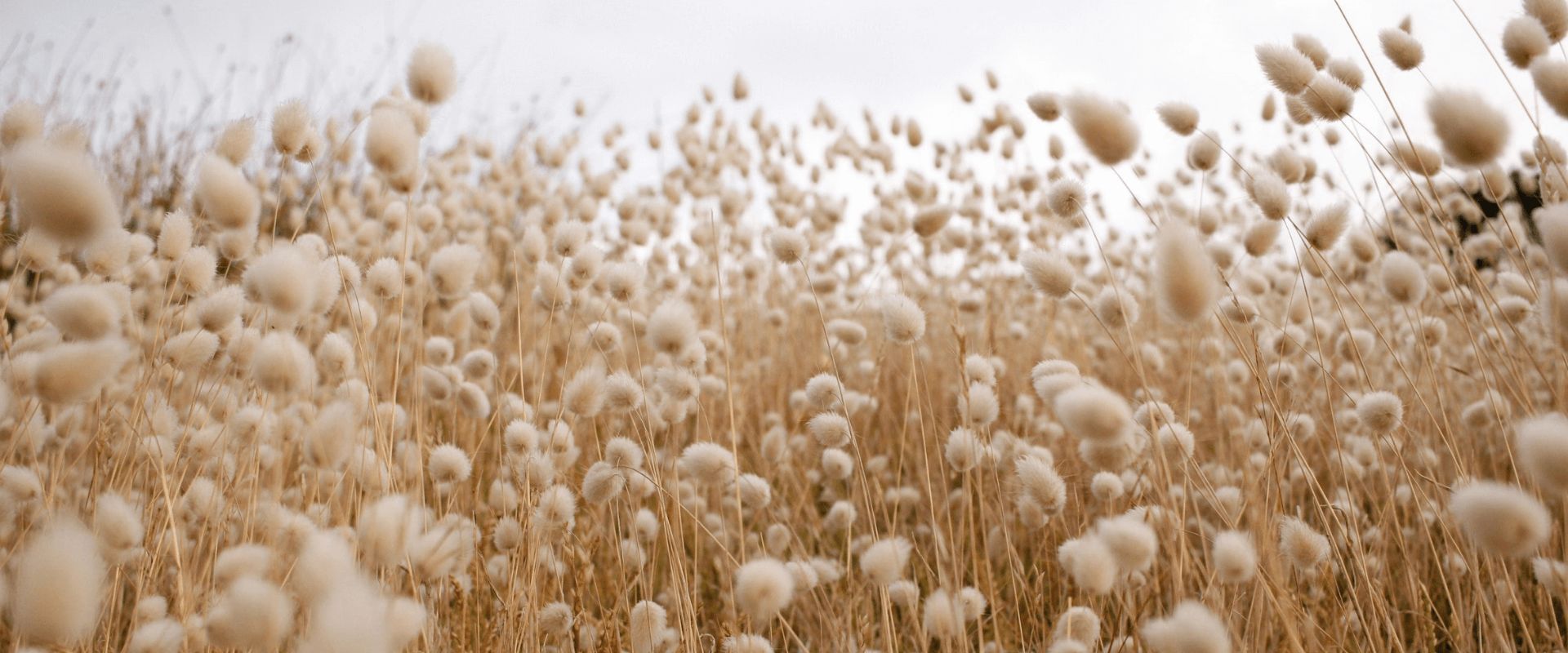Cotton is the most common (non-edible) crop in the world. About half of all textiles are made from cotton! Therefore, cotton fibres are one of the most important raw materials for textiles of all kinds. But is cotton still sustainable given its mass production? While conventional cotton plantations are always causing scandals, the production of organic cotton is gaining more traction. We at SANVT have analysed how cotton production has changed over the last 20 years and explain how cotton is becoming more sustainable.
Let’s start with a few facts that are often used for greenwashing purposes: global cotton production provides an income for more than 250 million people and employs almost 7% of all workers in developing countries. As a natural fibre, cotton is often marketed as a sustainable material. Theoretically, cotton is also biodegradable – provided it is not mixed with synthetic fibres or chemically dyed. It all sounds pretty eco-friendly and conscious at first glance. But if you look behind the scenes of conventional cotton plantations, you will unveil a darker reality: high use of fresh water, genetic manipulation of crops, toxic pesticides, environmentally harmful chemicals, unfair working conditions and child labour.
Therefore, we at SANVT are always sceptical about conventional cotton and prefer fair organic cotton for our products. This is also our recommendation for all those who want to play it safe when it comes to sustainability. But is sustainable cotton really that much better than conventional cotton, or is that just greenwashing again?

Why cotton is still considered the “dirtiest crop in the world”.
Conventional cotton
Natural fibre or not, conventional cotton is usually much more environmentally harmful. So it’s not without reason that cotton has been labelled the “dirtiest crop in the world” by the Organic Trade Association (OTA). This is because cotton cultivation is responsible for around 10 to 20 percent of the world’s pesticide use – and this in spite of the fact that cultivation only accounts for around 2.5 percent of the agricultural land used worldwide. The use of pesticides causes biodiversity loss and harms not only the soil and the cotton farmers, but also the skin of consumers. Even in manufactured garments, traces of the pesticides can sometimes still be found. Not to mention the chemical dyes that are contained in the textiles.
The often genetically manipulated crops from conventional cotton plantations also result in the loss of genetic diversity, as well as the uncontrollable spreading and development of pest resistance. To add to that, up to 11,000 litres of water are needed to grow just one kilogram of cotton! And that’s excluding water used in the dyeing process! This makes cotton an extremely thirsty plant that consumes an enormous amount of fresh water in addition to its harmful processes.
Organic cotton
The difference between conventional and organic cotton is stark. In comparison, organic cotton not only uses 88-91 percent less water, but also 62 percent less energy than conventional cotton. Furthermore, organic cotton is grown entirely without pesticides or synthetic fertilisers and is processed without chemicals. Last but not least, genetically modified crops are forbidden in organic cotton production. By minimising its impact on the environment, water and people, organic cotton contributes significantly to the future of sustainable fashion.
The proportion of fair and sustainable cotton is increasing very slowly, but steadily, and is playing an important role in moving towards the United Nations Sustainable Development Goals for fashion.
Read more about the benefits of organic cotton here.

Cotton farming today vs. 20 years ago: how cotton is becoming more sustainable.
An analysis of the last 20 years
Like most things in the 21st century, agriculture has evolved, and so has cotton farming. And although conventional cotton is still considered environmentally harmful, it is less so than it was 20 years ago. And that is precisely what gives hope for a more sustainable future for fashion. For example, if you look at the water consumption, soil loss and energy consumption associated with the production of one kilogram of cotton, the figures have decreased over the last two decades. CO2 emissions have also dropped by a third!
In fact, most of the US cotton crop is now irrigated solely by rain. Environmentally conscious changes like this not only save fresh water but also the use of pesticides and the need for ground cultivation.
How cotton is becoming more sustainable
While the positive developments in cotton farming over the past 20 years are hopeful, they do not change the fact that cotton is still the dirtiest crop in the world. So if you care about the climate, the environment, people and animals, we again advise you to choose fair trade organic cotton for a truly sustainable product.
That’s why SANVT products are made from premium organic cotton. Our products made from certified organic cotton are the Heavyweight T-Shirt and the Perfect Oxford Shirt, as well as the Heavyweight Boyfriend T-Shirt, the Unisex Long Sleeve T-Shirt and the Oversized Oxford Shirt.
Find out exactly what the organic label means here.
Infographic: How cotton is becoming more sustainable
All information, at one glance: Download as PDF


